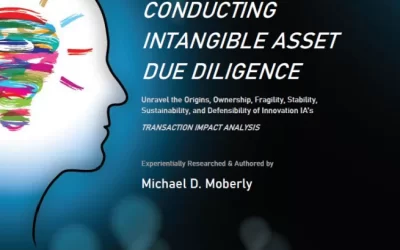Michael D. Moberly August 21, 2008 (Part One of a Two Part Post)
Terrorism, hurricanes, earthquakes, and cyber attacks have changed the landscape of continuity-contingency planning forever! Another, but often overlooked economic factor that has also prompted changes in continuity-contingency planning is the fact that 75+% of most company’s value, sources of revenue, and future wealth creation lie in – are directly tied to intangible assets, e.g., intellectual property, proprietary competitive advantages and know , and relationship capital, etc., to cite just a few, can, as we’ve witnessed on numerous occasions, become dispersed, inaccessible, and virtually irretrievable.
When those assets are not integral elements of a continuity-contingency plan, e.g., sustain (protect, preserve) control, use, ownership, and value, recovery becomes much more difficult, significantly less likely, and sometimes impossible.
The objectives of continuity – contingency planning for a company’s intangible assets are fairly straightforward…
Ensure that during and after a catastrophic event or significant business misfortune the company is able to sustain control, use, ownership, and value of those assets’ necessary to achieve a speedy, efficient, more complete, and uncontested economic – competitive advantage recovery!
Today, there are four important – conceptual starting points that must be recognized and integrated in continuity-contingency planning for intangible assets:
1. the economic fact – business reality that, for a vast majority of companies, their overwhelming value and sources of revenue (and future wealth creation) no longer evolve from tangible – physical assets, i.e., buildings, equipment, property, etc., rather from intangible assets such as proprietary know how, competitive advantages, customer/client relationship capital, and intellectual property, etc.
2. reliance on conventional IP protections as the primary means to recover intangible assets may be ineffective because, (a.) enforcement is costly and time consuming, and (b.) delays will complicate and even weaken a company’s legal position for trying to re-gain use and/or control of those assets.
3. stopping any (subsequent) economic – competitive advantage hemorrhaging initiated by predators, competitors, infringers, and assorted other global adversaries who will take advantage of such events and/or circumstances, is not merely a probability, rather an inevitability if not addressed.
4. the government does not issue your company a certificate that says these are your intangible assets, competitive advantages, trade secrets, and proprietary know how. That responsibility is clearly a ‘fiduciary one’ for each company.
It’s a wise and prudent practice then, for continuity – contingency planners to include – integrate an on-going ‘inventory of the company’s intangible assets’, because trying to (a.) prove their existance and value, and (b.) recover-retrieve them, after the fact, is not only costly and time consuming, but, will inevitably delay recovery, if there is to be a recovery!



